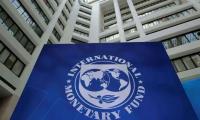According to TS Elliot, 'Home is Where One Starts' from. One starts his life, relationships, thinking, attitudes and behaviors, where one learns to live and let other live, where one learns being happy or sad, sharing and caring.
Therefore, a comfortable house is the great source of happiness, to be ranked immediately after health and good conscience. In countries like Pakistan where existing houses are far below the national needs, and demand for housing has outplaced the economy to produce more living space, where sufficient housing was never been a high priority of any government, resulting approval of nascent housing policy almost half a century later of its inception.
From the slogan of “Roti Kapra aur Makan” to so called Naya Pakistan, the promise of constructing five million houses was a far cry while keeping the track of last two years performance but the recent launch of pro-poor housing seems music to ears for those lower middle-class income groups who are longing to breath an honorable life in their own dynasty.
To materialise the dream, the PTI Government seems serious enough to launch different schemes, like joint venture on private land, government to government programs on government land and also by reviving various impeded projects including Green Enclave-I Bhara Kahu project, Sky Garden project under Lifestyle Residency Apartments G-13.
The federal government has also signed (MoUs) with provincial governments under government to government housing schemes venturing 798 apartments in Azad Jammu and Kashmir, 16,000 apartments for fishermen, 18,000 apartments and 12,000 plots for general people in Balochistan and 750 apartments in Khyber Pakhtunkhwa.
Developing Pakistan on the model of Welfare State of Madina, government plans to spend around Rs18 billion during current fiscal year on physical planning of low-cost houses to the deserving people.
When the ecosphere was battling with Covid-19, government’s announcement of heavy incentivisation and liberation package for the construction industry has started bearing fruits in Pakistan as just recently, 127 construction projects have been registered valuing Rs63 billion whereas, 114 projects costing Rs109 billion are in process.
This incentive package included waivers and subsidies in sales tax, capital gain tax and withholding tax, 90% rebate in fixed tax and a subsidy of Rs30 billion initially for construction of affordable communities.
The National Coordination Committee has been tasked to eradicate hiccups, condense number of NOCs, and establishing a web portal for one window operation for provision of loans verification of required documents.
The heads of banks have been asked for their full support and cooperation to the government in the promotion of construction sector and facilitating the poor segments of the society for the construction of their own houses.
Government’s vision of incentivising the construction industry for the benefit of multiple industries, shows seriousness on the government’s part, even to construct 100,000 houses in the first phase, is commendable. The commercial banks have directed to allocate five per cent of their lending portfolio for the construction industry that would make over Rs300 billion while the government would also provide Rs130 billion support to poor.Construction industry is mainstay of our economy and its flourishing would help overcome deficiency of housing units, growth of allied industries and jobs creation. According to a careful assessment the government’s start with one million houses, would create 2.5 million jobs and revive 40 to 72 allied industries. The builders and developers should take full advantage of this package and start their projects in this long-awaited approval regime for facilitation of the investors and builders. Covid-19 has slackened economic growth across the world but brisk advancement on these kinds of projects would help fetch economic turnaround by reestablishing the confidence of the local and foreign investors.
PTI leader Azam Khan Swati. — The News/File ISLAMABAD: A local court on Tuesday confirmed the bail of PTI’s...
An exterior shot of the FIA headquarters. — Facebook/FileISLAMABAD: The Federal Investigation Agency , breaking a...
Sarhad Chamber of Commerce and Industry president Fuad Ishaq. — Facebook/Fuad Ishaq PESHAWAR: Sarhad Chamber of...
Sarfraz Bugti. — APP/FileQUETTA: Balochistan Chief Minister Sarfaraz Bugti has said that a committee is being formed...
Chairman Joint Chiefs of Staff Committee General Sahir Shamshad Mirza conferred civil awards to the eminent...
Former federal minister Fawad Chaudhary. — APP/FileMULTAN: Former Pakistan Tehreek-e-Insaf leader Fawad Chaudhry has...







